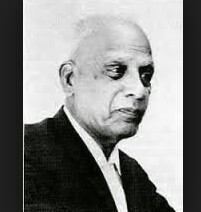K. R. Ramanathan facts for kids
Quick facts for kids
K. R. Ramanathan
FNA, FASc, FIAS, FRMetS
|
|
|---|---|
 |
|
| Born |
Kalpathi Ramakrishna Ramanathan
28 February 1893 |
| Died | 31 December 1984 (aged 91) |
| Nationality | Indian |
| Awards |
|
| Scientific career | |
| Fields | Physics and Meteorology |
| Doctoral advisor | C. V. Raman |
Kalpathi Ramakrishna Ramanathan (born February 28, 1893 – died December 31, 1984) was an important Indian physicist and meteorologist. He was the first leader of the Physical Research Laboratory in Ahmedabad. From 1954 to 1957, Ramanathan was the President of a big international science group called the International Union of Geodesy and Geophysics (IUGG). He received two of India's highest awards: the Padma Bhushan in 1965 and the Padma Vibhushan in 1976.
Contents
Early Life and Discoveries
Ramanathan was born in Kalpathi, Palakkad. His father, Ramakrishna Sastrigal, was an astrologer and a scholar. K. R. Ramanathan went to Government Victoria College in 1909. Later, he got a scholarship to study physics at Presidency College, Madras. He earned his first degree in 1914 and a master's degree in 1916.
After his studies, he worked as a physics demonstrator at Maharaja's College of Science in Thiruvananthapuram. A demonstrator helps students with experiments and teaches practical skills. Here, he had the freedom to do his own research. He created the first rainfall map of Travancore and published his first paper about thunderstorms.
In 1921, Ramanathan moved to Calcutta to work with the famous scientist C. V. Raman. He became Raman's student and studied how X-rays behave in liquids. For this work, he received the first-ever D.Sc. degree from the University of Madras in 1922. He then became an assistant professor at Rangoon University. During his holidays, he continued to work with C. V. Raman. In 1923, he saw a special glow when light passed through water. This observation helped C. V. Raman discover the "Raman effect," which is about how light changes when it interacts with different substances.
Working with Weather in India
In 1925, Ramanathan joined the India Meteorological Department as a senior scientist. For the next 20 years, he studied many things about Earth's atmosphere. He looked at atmospheric ozone, how monsoons work, and how sunlight and air radiation affect our planet.
He also led the Colaba and Alibag Magnetic Observatories and the Kodaikanal Solar Physics Observatory. These places later became the Indian Institute of Geomagnetism and the Indian Institute of Astrophysics. During the Second World War, he helped train weather experts for the Indian Air Force.
Leading the Physical Research Laboratory
Ramanathan retired from the India Meteorological Department in 1948 when he was 55. But he didn't stop working! He became the first director of the new Physical Research Laboratory (PRL) in Ahmedabad.
At PRL, he set up special stations to measure ozone in India. He continued his research on atmospheric ozone and figured out how ozone in the air is connected to how air moves around the Earth. He and his students also made important discoveries about the ionosphere, which is the upper part of Earth's atmosphere.
Under Ramanathan's leadership, PRL played a big role in starting India's space program. They helped test sounding rockets and develop the Thumba Equatorial Rocket Launching Station (TERLS), which is a place where rockets are launched near the equator.
Later Years and Legacy
Ramanathan retired from PRL in 1966, but he stayed on as an Emeritus Professor until he passed away on December 31, 1984, at the age of 91. He guided more than 30 students in their scientific research during his career.
He married Parvati Ammal and they had four daughters and two sons. His wife passed away in 1952.
Honours and Awards
K. R. Ramanathan received many awards and honours for his important work:
- Foundation Fellow of the Indian Academy of Sciences (FASc; 1934)
- Foundation Fellow of the Indian National Science Academy (FNA; 1935)
- Title of Diwan Bahadur (from the British Government, 1943)
- Fellow of the Indian Association for the Cultivation of Science (FIAS; 1952)
- International Meteorological Organization Prize of the World Meteorological Organization (1959)
- Honorary Fellow of the Royal Meteorological Society (Hon. FRMetS; 1960)
- Padma Bhushan (1965)
- Padma Vibhushan (1976)
- The Aryabhata Medal, awarded by Indian National Science Academy, 1977
To honour him, the Indian National Science Academy created the Kalpathi Ramakrishna Ramanathan Medal in 1987.

